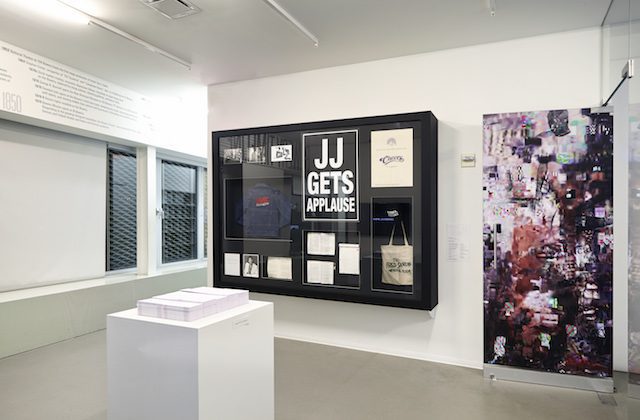Los Angeles-based Martine Syms has been called a net artist, graphic designer, and publisher, but prefers the term conceptual entrepreneur to explain what she does

Martine Syms, The Queen's English, 2014. Exhibition and reading room. Courtesy of the artist
C&: You define yourself as a conceptual entrepreneur. How do you combine business and art with a critical stance?
Martine Syms: I own a business. My philosophy around entrepreneurship is inspired by the stories in Our Band Could Be Your Life, point three of the Black Panther Party’s Ten-Point Program, and the idea that value is an abstraction. Oh yeah, also Sol Lewitt’s “Sentences on Conceptual Art.” But mostly the part where he says that the idea becomes the machine that makes the art.
C&: In one of your latest works, Notes on Gesture, you explore physical movement and identity creation. Tell us a bit about this great video piece. What is behind the idea of looping/repeating gestures (as forms of language)?
MS: Notes on Gesture is a video comparing authentic and dramatic gestures. The piece alternates between title cards proposing hypothetical situations and short, looping clips that respond. The actor uses her body to quote famous, infamous, and unknown women. I asked Diamond Stingily (who stars in the piece) to embody different women, family members, celebrities, friends of ours, etc. Gordon Hall, who is an amazing artist based in New York, did a lecture performance about the history of lecture performances titled “Read me that part again, where I disinherit everybody.” At one point in the lecture Gordon says, “Politics is something you do with your body.” This line got stuck in my head. I was also thinking about Black women appearing in animated GIFs and reaction images that ended up being used by everyone. These images circulate meaning, behavior, and bodies. I wondered what they meant.
.
C&: In a recent interview, you said, “I think less about myself as a Black artist than I do about making work for a Black viewer.” How do you mean this?
MS: I like to assume that the person encountering my work is Black.
C&: What do you think of today’s trending term of “post-Internet art”? Do you identify with this concept?
MS: I identify with the concept of post-Internet art as much as I identify with the term post-race, which is to say, not at all. Karen Archey has also written some provocative texts around the idea. I enjoyed reading Gene McHugh’s blog Post-Internet [which was published as a book in 2011]. I assigned it to my class this fall. But the term itself is not very useful to me.

Martine Syms, S1:E1 installation, 2015 Triennial: Surround Audience New Museum, 2015. Photo by Benoit Pailley. Courtesy of the artist
C&: You are publishing as well. Are you interested in being defined as an artist, a publisher, an entrepreneur? Or do you find that tendency to define a creative working person to be a bit outdated?
MS: I find it extremely old-fashioned, but it’s good for marketing. If I’m trying to package myself, I only use one descriptor. I prefer to identify as a storyteller. Just kidding—DJ is my favorite.
.
Interview by Aïcha Diallo
More Editorial